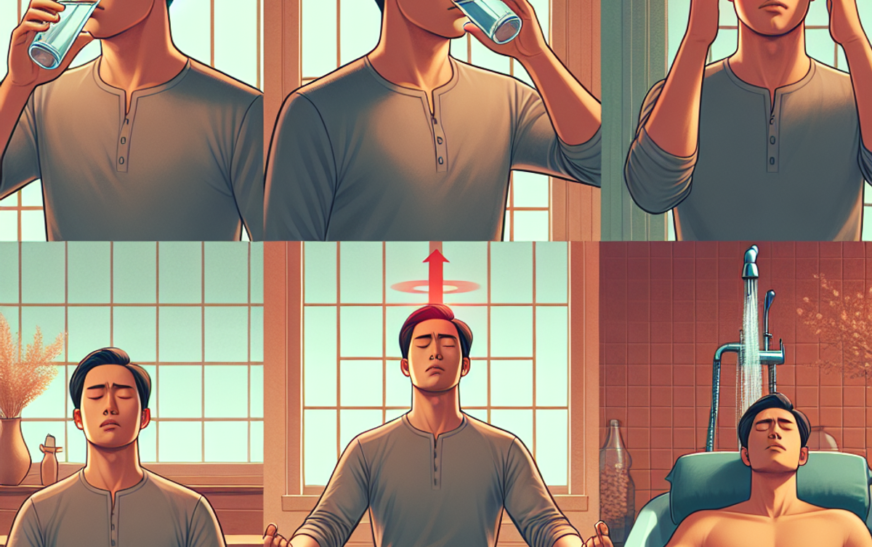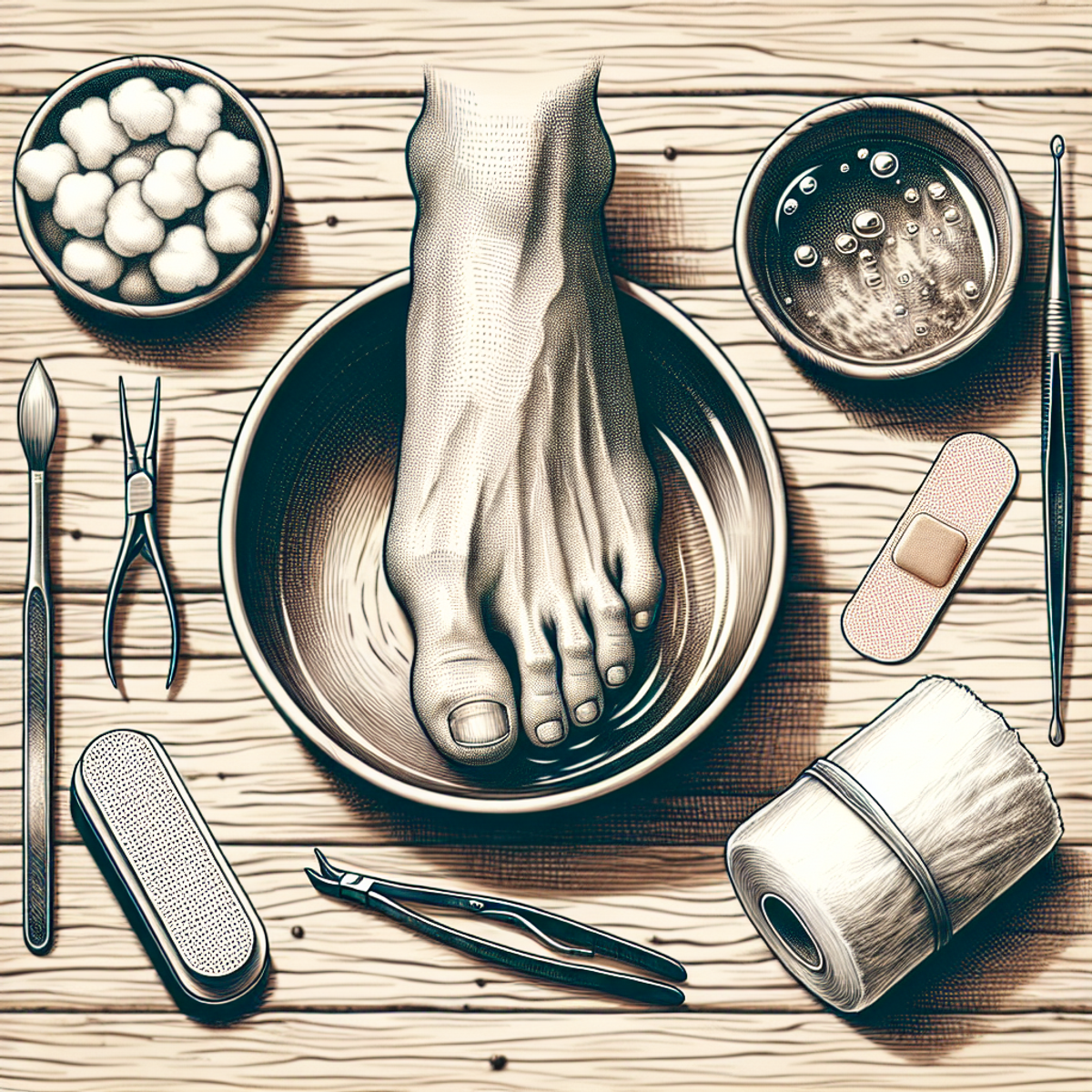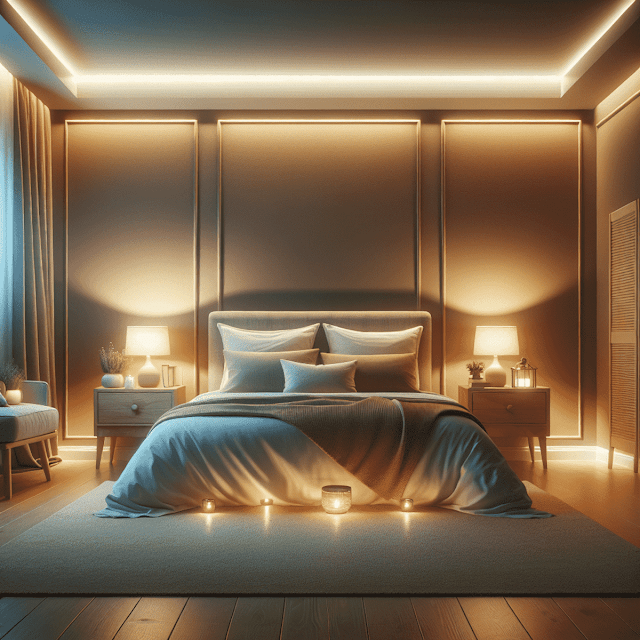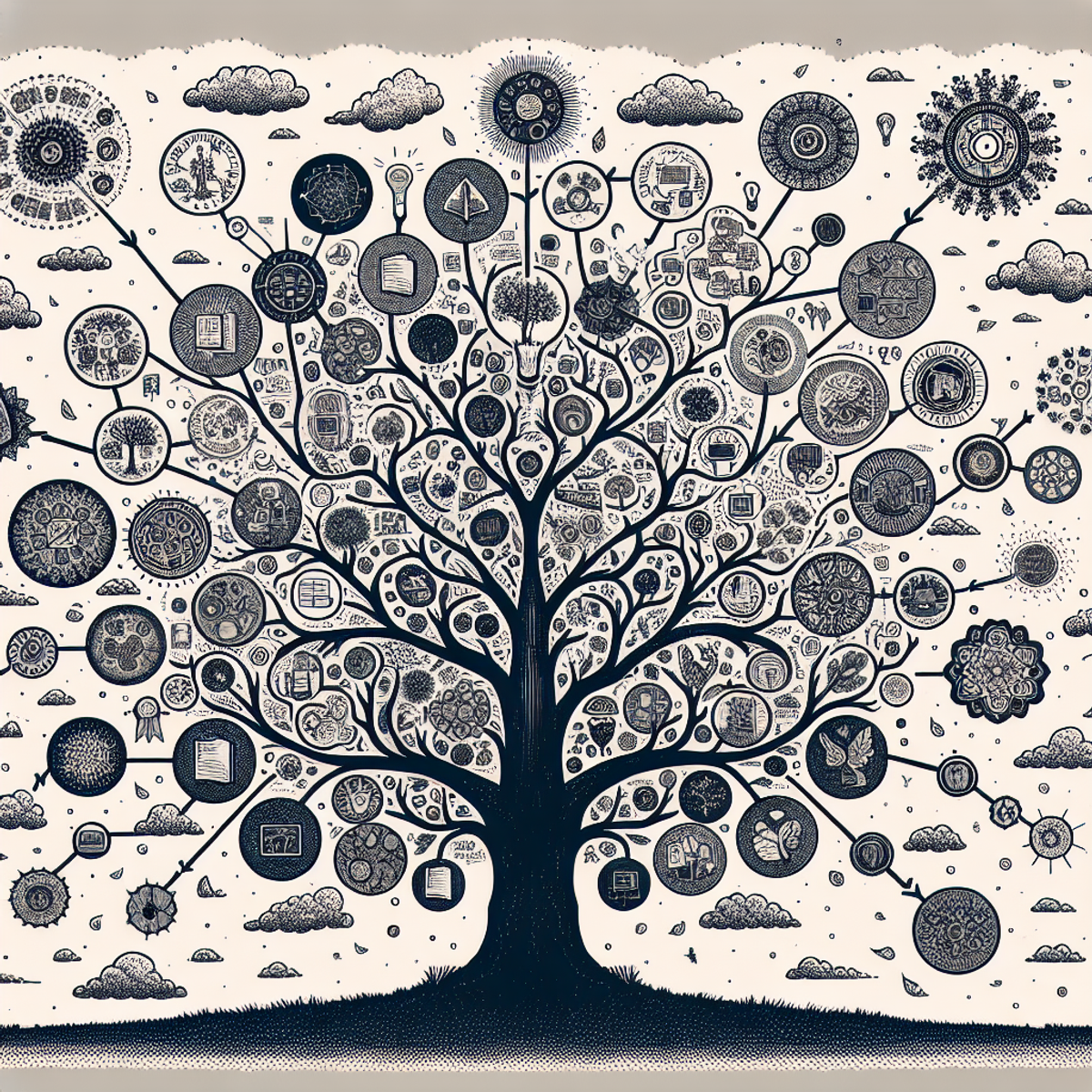Introduction
Migraine self-care is important when it comes to dealing with migraines. By using self-care strategies, you can reduce how often you get migraines and how bad they are. These strategies help you take charge of your condition and improve your overall health and happiness.
Living with migraines can be tough. The pain, sensitivity to light and sound, and other symptoms can affect your daily life. Migraines are not just regular headaches; they are a neurological condition that affects millions of people all over the world. Knowing how to take care of yourself is key to managing migraines effectively.
What is Self-Care for Migraines?
Self-care contains various practices that focus on physical, emotional, and mental health. It affects making lifestyle changes, including relaxation techniques, and identifying triggers to prevent or reduce the occurrence of migraines.
- Physical self-care: includes activities that promote physical well-being such as staying hydrated, getting enough sleep, and engaging in gentle exercise.
- Emotional self-care: involves practices that support emotional well-being like managing stress, practicing mindfulness, and seeking social support.
- Mental self-care: includes strategies to maintain mental health such as adopting healthy coping mechanisms, setting realistic goals, and engaging in activities that boost the mind.
Why is a Personalized Self-Care Plan Important?
Self-care is not the same for everyone. It’s important to create a personalized plan that fits your specific needs. By developing a comprehensive self-care plan for migraines, you can combine different strategies to get the best results. Working closely with healthcare providers who specialize in migraine management is key to creating a plan that addresses your specific triggers and symptoms.
In the next sections, we’ll explore ten effective self-care strategies for managing migraines. By incorporating these strategies into your daily routine and making them a part of your lifestyle, you can take important steps toward effectively managing migraines. Let’s dive into each strategy and see how it can help improve migraine management.
1. Stay Hydrated
Proper hydration is important for preventing and relieving migraines. Dehydration is a common trigger for migraine attacks, so staying hydrated can play a significant role in managing this condition. Here are some ways to ensure you drink enough water throughout the day:
- Set Reminders: Use a phone app or set alarms to remind yourself to drink water at regular intervals.
- Carry a Water Bottle: Keep a reusable water bottle with you wherever you go, making it easier to sip water throughout the day.
- Infuse Your Water: If plain water is unappealing, try infusing it with fruits like lemon, cucumber, or berries to add flavor and encourage consumption.
- Monitor Urine Color: Pay attention to the color of your urine; pale yellow or straw-colored urine usually indicates good hydration.
It’s important to note that while drinking water is essential, overhydration can also trigger migraines in some people. Striking a balance and being mindful of your body’s hydration needs is key.
2. Create a Restful Environment
Rest is important for dealing with migraines. You can create a calm and soothing space to help ease symptoms and recover faster from a migraine attack. Here are some tips for setting up a restful environment:
Tips for Setting Up a Restful Environment during a Migraine Attack
- Find a quiet room: When you have a migraine, being in a quiet room can make a big difference. Migraine attacks often make people sensitive to noise, so it’s best to choose a space that is away from loud sounds or distractions.
- Dim the lights: Bright lights can worsen migraine symptoms and increase discomfort. It’s better to have softer lighting or use curtains to block out the sunlight and create a more relaxing atmosphere.
- Consider using blackout curtains: If you get migraines with sensitivity to light, using blackout curtains might help. These curtains block external light sources and create a dark environment that can potentially reduce pain.
- Keep the temperature comfortable: Extreme temperatures can trigger migraines or make them more effective. Make sure the room is at a comfortable temperature by using fans, air conditioning, or heating as needed.
- Avoid strong odors: Strong smells like perfumes or cleaning products can be overwhelming and worsen migraine symptoms. Keep the room well-ventilated and free from any strong odors.
- Try relaxation techniques: Add relaxation techniques to your restful space to enhance the calming effect. This could involve playing gentle music, using aromatherapy with essential oils like lavender, or practicing deep breathing exercises.
- Have comfortable seating: Having a comfortable spot to sit or lie down is important during a migraine attack. Look for supportive cushions or pillows that can help you find a position that minimizes pain.
Creating a restful environment can greatly improve your ability to manage migraines and find comfort during an attack. Remember, everyone’s preferences may vary, so feel free to try different elements and see what works best for you.
3. Use Cold Therapy
When it comes to relieving a migraine episode, using cold therapy can be an effective way to reduce pain and promote relaxation. Applying cold compresses to the head can help numb the area and decrease inflammation, providing much-needed relief.
Key Points for Using Cold Therapy
Here are some key points to consider when using cold therapy for migraines:
- Cool cloth: An easy and convenient way to use cold therapy is by placing a cool cloth on your forehead or the back of your neck. Soak a washcloth in cold water and gently place it on the affected area. The coolness of the cloth can provide immediate relief by constricting blood vessels and reducing pain.
- Ice packs: Ice packs are another popular choice for cold therapy during a migraine attack. You can use ready-made gel packs or fill a ziplock bag with ice cubes wrapped in a thin towel or cloth for protection. Apply the ice pack to your head or neck for about 15 minutes at a time, giving your skin breaks between applications.
- Cold showers: Taking a cold shower or splashing cold water on your face can have a similar cooling effect on your body. The spray of cold water stimulates your nerves and helps distract your brain from the pain signals caused by migraines.
- Gel masks: Gel masks designed specifically for migraine relief can be cooled in the refrigerator or freezer. These masks conform to the shape of your head and provide targeted cooling to areas of pain.
It’s good to know that while using cold therapy can help many people, everyone’s experience with migraines is different. Some people might find that heat therapy, like warm compresses or hot showers, gives them more relief. It’s important to try different things and see what works best for you.
In addition to using cold therapy directly, it’s also important to create a calming environment during a migraine episode. This means dimming the lights, reducing noise, and finding a comfortable position to rest in. By combining cold therapy with a peaceful setting, you can make your self-care routine more effective for managing migraines.
Remember, these strategies should be added to your current migraine management plan and discussed with your healthcare provider. They can offer personalized advice and help you develop a comprehensive self-care approach that meets your specific needs.
4. Identify and Avoid Triggers
When it comes to dealing with migraines, it’s important to identify and steer clear of triggers. One helpful method is to maintain a migraine diary. This can assist individuals in recognizing patterns and identifying specific factors that may initiate migraines.
The Migraine Diary
Keeping a detailed record of your daily activities, including what you eat and drink, how you sleep, your stress levels, and when you experience migraines can provide valuable insights into potential triggers. By consistently noting these details, you may begin to identify patterns that occur prior to the onset of migraines. This information can be highly beneficial in making informed adjustments to your lifestyle to avoid triggers.
Common Triggers
Some common migraine triggers include:
- Certain foods and drinks(e.g., aged cheese, processed meats, alcohol, caffeine)
- Strong smells or perfumes
- Changes in weather or barometric pressure
- Hormonal changes
- Stress and anxiety
- Irregular sleep patterns
- Bright lights or glare
Strategies to Avoid Triggers
To minimize migraine triggers, try the following:
- Find a quiet and dark space during a migraine to reduce sensory overload.
- Practice stress-reduction techniques like meditation, deep breathing, or yoga.
- Maintain consistent sleep patterns and get enough rest.
- Adjust your diet based on foods that may trigger migraines.
- Limit exposure to strong smells or potential environmental irritants.
By using these strategies and making lifestyle changes based on insights from your migraine diary, you can take control of your migraines more effectively.
5. Contain Regular Sleep Patterns
Here are some tips to help you maintain a consistent sleep schedule:
- Stick to a regular sleep schedule: Try to go to bed and wake up at the same time every day, including weekends. This helps regulate your body’s internal clock and improves sleep quality.
- Set up a sleep-friendly bedroom: Make sure your bedroom is comfortable, cool, dark, and quiet for optimal rest. Consider using blackout curtains, earplugs, or white noise machines if necessary.
- Establish bedtime rituals: Develop a relaxing routine before bed to signal to your body that it’s time to unwind. This could involve activities like reading a book, taking a warm bath, or practicing relaxation techniques such as deep breathing or meditation.
- Limit stimulants: Avoid consuming caffeine or other energizing substances close to bedtime as they can interfere with falling asleep. It’s also important to limit daytime napping, as it can disrupt your sleep-wake cycle.
- Avoid electronics before bed: The blue light emitted by electronic devices like smartphones, tablets, and laptops can disrupt the production of sleep hormones. Try to avoid using these devices for at least an hour before going to bed.
- Create a comfortable sleep environment: Invest in a supportive mattress and pillows that suit your preferences. Experiment with different bedding materials and temperatures to find what works best for you.
- Manage stress: High levels of stress can make it more difficult to fall asleep and stay asleep. Incorporate stress management techniques into your daily routine, such as practicing mindfulness or engaging in relaxation exercises.
Remember, everyone’s sleep needs are different, so it’s essential to find a routine that works best for you. By prioritizing good sleep habits and maintaining regular sleep patterns, you can reduce the risk of migraines and improve your overall well-being.
6. Engage in Gentle Exercise
Regular physical activity, such as yoga or walking, can play a significant role in better migraine management. Here’s how engaging in gentle exercise can contribute to managing migraines effectively:
How Gentle Exercise Can Help Manage Migraines
- Improved blood circulation: Gentle exercises like yoga and walking can help improve blood flow and circulation, which may help migraine symptoms for some individuals.
- Stress reduction: Physical activity has been shown to reduce stress levels, which is a common trigger for migraines. Engaging in gentle exercise can help promote relaxation and reduce the chance of experiencing stress-induced migraines.
- Release of endorphins: Exercise promotes the release of endorphins, which are natural painkillers produced by the body. This can potentially help in reducing the intensity of migraine pain.
- Enhanced sleep quality: Regular physical activity has been linked to improved sleep quality. Since disrupted sleep patterns can trigger migraines, maintaining a consistent exercise routine may contribute to better overall sleep, potentially reducing the risk of migraines.
If you get migraines, it’s important to pick exercises that are gentle and won’t make your migraines worse. This can help lower the risk of getting a migraine. It’s also really important to pay attention to how your body feels and not push yourself too much, especially if you’re having a migraine attack.
Adding gentle exercise to your routine might help make your migraines happen less often and be less intense. Before you start any new exercise program, especially if you have health issues or medical conditions, make sure to talk to your healthcare provider.
7. How Caffeine Affects Migraines and Tips for Managing Intake
Caffeine is a substance that provides an energy boost and is present in coffee, tea, chocolate, and certain medications. It can alleviate headaches and increase alertness. However, for some individuals, it may also trigger migraines. Understanding how your body responds to caffeine and managing your intake can be crucial in preventing migraine attacks.
The Role of Caffeine in Migraine Triggers
- Caffeine influences blood vessels in the brain, potentially causing vasoconstriction (narrowing) or dilation (widening), both of which might contribute to migraines.
- For certain people, even small amounts of caffeine can be enough to set off a headache.
When to Limit Your Caffeine Consumption
If you find that caffeine consistently causes your migraines or exacerbates them, you may need to decrease or stop consuming caffeine. Look out for these indications:
- Frequently getting migraines after consuming caffeinated products
- Experiencing more severe migraines with caffeine consumption
- Getting headaches when you don’t have your usual dose of caffeine, could suggest dependency on the substance.
Understanding Your Sensitivity to Caffeine
Everyone’s tolerance for caffeine is different. Some people can have moderate amounts without any negative effects, while others may need to avoid it completely. To find out your tolerance level:
- Keep track of how you feel after consuming drinks or foods that contain caffeine.
- Pay attention to any changes in the frequency, intensity, or duration of your headaches.
- If you suspect that caffeine might be a trigger for your migraines, try gradually reducing your intake to see if your symptoms improve.
Tips for Gradually Reducing Your Caffeine Intake
If you decide to cut back on caffeine, it’s generally recommended to do so gradually rather than stopping suddenly. Quitting caffeine suddenly can lead to symptoms like headaches and irritability. Try these strategies:
- Replace one cup of caffeinated coffee or tea with a decaffeinated version each day or every few days.
- Mix regular coffee with decaf in increasing ratios to slowly reduce your overall caffeine intake.
- Explore alternative drinks like herbal teas (e.g., chamomile, peppermint) that don’t contain caffeine.
- Stay hydrated throughout the day, as dehydration can sometimes exacerbate headaches.
- Prioritize getting good rest and practicing good sleep hygiene, as tiredness can contribute to migraines.
“By being mindful of your caffeine intake and understanding how it affects your migraines, you can make informed choices that support your overall migraine management plan.”
8. Practice Stress Reduction
Stress can contribute to migraines, so it’s important to incorporate stress reduction techniques into your self-care routine. By effectively managing stress, you can prevent migraine attacks and lessen their severity. Here are some strategies to consider:
- Relaxation techniques: Engaging in relaxation exercises can help calm your mind and body, lowering stress levels. Effective techniques include deep breathing exercises and advanced muscle relaxation. These practices promote relaxation and can be done anywhere, anytime.
- Mindfulness for migraines: Mindfulness-based stress reduction (MBSR) involves focusing on the present moment without judgment. Practicing mindfulness has been shown to decrease the frequency and intensity of migraines. You can incorporate mindfulness into your daily routine through activities like meditation, yoga, or tai chi.
- Prioritize self-care: Taking care of yourself is vital for managing stress and preventing migraines. Make sure to prioritize activities that bring you joy and relaxation, such as reading a book, taking a bath, or spending time with loved ones. Remember that self-care is not selfish; it’s essential for your overall well-being.
- Healthy lifestyle habits: Adopting healthy lifestyle habits can also help reduce stress levels and prevent migraines. Ensure you get regular exercise, eat a balanced diet, and get enough sleep each night. These habits contribute to overall well-being and can positively impact migraine management.
- Seek support: Don’t hesitate to reach out for support when needed. Talking to a trusted friend or family member about your feelings can help alleviate stress. Additionally, consider joining a support group or seeking professional help from a therapist who specializes in migraine management.
By incorporating these stress reduction strategies into your daily life, you can create an environment that promotes relaxation and decreases the likelihood of migraines. Remember that everyone’s stress triggers and coping mechanisms are different, so it’s important to find techniques that work best for you. Experiment with different strategies and be patient with yourself as you navigate your migraine self-care journey.
9. Consideration for Over-the-Counter Medications
When it comes to managing migraines, over-the-counter (OTC) pain medications can potentially help treat mild episodes. Medications like acetaminophen, ibuprofen, and aspirin are easy to find and can provide relief for some people. However, it’s important to use them safely and follow the guidelines.
Here are some key considerations when using OTC pain medicines for migraines:
Identify the right medication
There are various types of over-the-counter pain relievers to choose from. It’s important to select the one that suits you best. Acetaminophen, also known as paracetamol, is often suggested as an initial treatment for mild migraines. Ibuprofen and aspirin are nonsteroidal anti-inflammatory drugs (NSAIDs) that can also effectively relieve migraine symptoms.
Follow dosage instructions
It is important to follow the dosage instructions on the packaging or as advised by your healthcare provider. Taking more than the recommended dose does not always give extra relief and can increase the risk of side effects.
Be aware of potential side effects
Over-the-counter pain medications can cause side effects, especially if used too much or for a long time. Some common side effects may include upset stomach, bleeding in the digestive system, and damage to the liver. It’s important to know about these risks and talk to a healthcare professional if you have any worries.
Avoid medication overuse
Using over-the-counter (OTC) pain medications too often can result in medication overuse headaches or rebound headaches. These headaches happen when the effects of the pain medication wear off, leading to a cycle of dependency on the medication. To avoid this, it’s recommended to restrict the use of OTC pain relievers to a maximum of two or three days per week.
Consider combination formulations
Some over-the-counter pain relievers for migraines are available in combination formulas, which might contain caffeine or other substances. These combinations can be more helpful for certain individuals, but it’s crucial to exercise caution if you are sensitive to caffeine or have any underlying health conditions that could be impacted by additional ingredients.
Consult with a healthcare provider
If over-the-counter (OTC) pain medications don’t give enough relief or if you get migraines regularly, it’s a good idea to talk to a healthcare provider. They can evaluate your condition, give personalized recommendations, and determine if you might need prescription medications or other treatments.
Keep in mind that while OTC pain medications can help with mild migraines, they may not be right for everyone. It’s important to use them responsibly and along with other self-care strategies as part of a comprehensive plan for managing migraines.
By including these steps in your self-care routine, you can make informed decisions about using OTC pain medications and work toward finding the most effective approach for managing your migraines.
10. Build a Comprehensive Migraine Self-Care Plan
A comprehensive approach to managing migraines involves combining different self-care strategies for better results. It’s important to know that what works for one person may not work for another, so it’s crucial to collaborate with a healthcare provider to create a personalized treatment plan.
Here are some key points to consider when building your comprehensive migraine self-care plan:
1. Identify and track triggers
Keeping a headache diary can help you figure out patterns and possible causes of your migraines. Pay attention to things like what you eat, stress levels, changes in weather, hormonal changes, and your sleep patterns. By understanding why you get migraines, you can take action to avoid them and make them happen less often.
2. Implement lifestyle changes
Making certain changes to your lifestyle can greatly help in managing migraines. It’s worth considering incorporating regular exercise into your daily routine, trying out stress reduction techniques such as meditation or deep breathing exercises, maintaining a consistent sleep schedule, and avoiding excessive caffeine intake.
3. Establish a consistent self-care routine
Consistency is really important when it comes to managing migraines. It’s a good idea to establish a daily self-care routine that includes things like drinking enough water, getting plenty of rest, trying relaxation techniques like yoga or mindfulness, and making sure you have a calm and peaceful environment in case you have an attack.
4. Explore alternative therapies
Along with regular medical treatments, there are other therapies that some people find useful in managing their migraines. These can include acupuncture, biofeedback, massage therapy, or herbal supplements. It’s important to talk to your healthcare provider before adding these options to your self-care routine.
5. Consider preventive medications
If you experience painful or frequent migraines, your healthcare provider may prescribe preventive medications to help lessen the frequency and severity of your attacks. These medications are taken regularly to prevent migraines instead of treating them after they have already begun.
Keep in mind that creating a successful self-care plan requires time and patience. You may need to try different strategies to find what works best for you. By taking a proactive approach and collaborating closely with your healthcare provider, you can develop a comprehensive self-care plan for migraines that effectively helps you manage them and enhance your overall quality of life.
Sources:
Conclusion
Managing migraines can be tough, but incorporating these self-care strategies into your daily routine can help you take control and find relief. Here are the key points:
- Make self-care a priority: Taking care of yourself is crucial when dealing with migraines. By dedicating time and effort to self-care, you can better manage symptoms and improve your well-being.
- Combine strategies: One self-care strategy may not provide complete relief, so try combining different techniques to create a comprehensive treatment plan that addresses various aspects of migraine management. Experiment to find what works best for you.
- Work with healthcare providers: Get professionals involved in your journey. They can help you develop a personalized treatment plan and offer guidance on medication options.
- Track triggers: Use a headache diary to identify triggers and patterns that contribute to your migraines. This information can help you make informed decisions about lifestyle changes that may reduce the severity of your migraines.
- Be consistent: Consistency is key in self-care for migraines. Stick to regular sleep patterns, practice stress reduction techniques, and maintain healthy habits like staying hydrated and engaging in gentle exercise.
Remember, everyone’s experience with migraines is unique, so finding the right combination of self-care strategies may take time and experimentation. Stay patient and reach out for professional support when needed.
By adopting these strategies and creating a comprehensive treatment plan, you can effectively manage your migraines and improve your quality of life.










